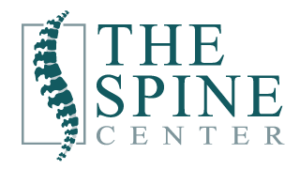Did you know nearly 100 million Americans suffer neck and back pain? Neck and back pain are common issues. Whether you’re hunched over a desk for long hours or engaged in physically demanding activities, the strain on your neck and back can lead to discomfort and pain.
Understanding the relationship between neck and back pain is crucial for effective management and prevention. Below, we will learn how neck and back pain are interconnected and discuss the causes, symptoms, and strategies to alleviate and prevent these issues.
Neck Pain and Its Connection to Back Pain
The neck, or cervical spine, consists of vertebrae that support the weight of your head and facilitate its movement. The weight of an adult’s head ranges from 5 kg to 6.3 kg. When the muscles, ligaments, or discs in this area experience strain or injury, it can result in discomfort or neck pain.
It’s important to know that neck pain is not always limited to the cervical spine and can radiate to other areas, including the upper back.
Poor posture, which can also cause back discomfort, is a common cause of neck pain. For instance, spending long hours hunched over a computer screen or constantly looking down at a smartphone can strain the muscles and ligaments in the neck. This can eventually cause discomfort.
This strain can gradually extend to the upper back, contributing to back pain.
Back Pain and Its Connection to Neck Pain
Similarly, back pain can also cause neck discomfort. The spine consists of the cervical, thoracic, and lumbar regions.
If you experience a misalignment or injury in the lower back (lumbar spine), this can create an imbalance in the entire spinal column, potentially causing a debilitating effect on the neck region.
For example, you may strain your lower back excessively during strenuous activities.
These activities could include:
- Heavy lifting
- Repetitive movements
This strain can cause pain and muscle tension in the lower back, but it can also impact the spine’s alignment. Over time, this misalignment can lead to compensatory changes in the upper spine, resulting in neck pain.
Preventing and Alleviating Neck and Back Pain
To prevent neck and back pain, it’s essential to maintain a good posture and practice proper body mechanics during daily activities. Here are some tips:
Ergonomic Workstation Setup
Creating an ergonomic workstation is crucial for maintaining a healthy posture and minimizing strain on the neck and back. By following these guidelines, you can significantly reduce the risk of developing neck and back pain.
Choosing the Right Chair
Select a chair that supports your back adequately. Look for chairs with the following:
- Adjustable height
- Lumbar support
- Comfortable cushioning
Adjust the chair’s height so that your feet rest flat on the floor and your knees are at a 90-degree angle.
Positioning the Monitor
Place your monitor directly in front of you at eye level. This position helps maintain a neutral posture and prevents excessive strain on your neck. Consider using a monitor stand or adjusting the height of your monitor accordingly. Individuals who utilize dual monitors, which is quite prevalent nowadays, are advised to position the screens close to each other. This practice aims to minimize the need for frequent lateral head movement, mitigating potential strain on the neck.
Keyboard and Mouse Placement
Position your keyboard and mouse so that your arms are at a comfortable angle, forming an L-shape. Avoid reaching forward or extending your arms too far. Consider using a wrist rest to support your wrists and minimize strain.
Proper Desk Setup
Ensure that your desk is at an appropriate height. Let your arms rest comfortably on the desk while maintaining a relaxed shoulder position. Use a keyboard tray or an adjustable desk to achieve the desired height if necessary.
Regular Breaks and Movement
Remember to take regular breaks from sitting. Try stretching or light exercises. Stand up, stretch your neck and back muscles, and walk around to relieve tension and improve blood circulation.
Building Support for a Healthy Spine
Engaging in targeted exercises that strengthen the muscles supporting the neck and back is essential. This will help prevent pain and maintain a healthy spine. Incorporate the following exercises into your routine:
Neck Stretches
Gently tilt your head from side to side, forward and backward, and rotate it in a circular motion. These stretches help relieve tension and improve flexibility in the neck muscles.
Shoulder Rolls
Roll your shoulders. Use a circular motion, both forward and backward. This exercise helps release shoulder and upper back tension, promoting better posture.
Core Strengthening
Include exercises that target your core muscles. For example, planks, bridges, and abdominal crunches. A strong core provides stability to the spine, reducing the risk of strain and injury.
Incorporating these strengthening exercises into your fitness routine can build muscular support for your neck and back. Stronger support could equal less pain and a healthy spine.
Proper Lifting Techniques
When lifting heavy objects, bend your knees and use your leg muscles to lift, keeping the object close to your body. Avoid twisting motions while lifting, as it can strain the back and neck.
Relaxation Techniques
Practice stress management techniques. For example, the following:
- Deep breathing
- Peaceful meditation
- Yoga exercise
Stress can contribute to muscle tension and exacerbate neck and back pain.
Persistent Neck and Back Pain: Visiting a Chiropractor
When dealing with persistent neck and back pain, seeking the help of a chiropractor can offer valuable relief. Chiropractors are healthcare professionals who specialize in diagnosing and treating issues.
Through hands-on adjustments and targeted therapies, chiropractors aim to restore the following:
- Proper alignment
- Reduce inflammation
- Alleviate pain
During a chiropractic session, the chiropractor will do the following:
- Assess your condition
- Identify any misalignments or restrictions
- Develop a personalized treatment plan
They may use techniques such as spinal manipulations, massage, and rehabilitative exercises.
Routine chiropractic care can improve the following:
- Your mobility
- Reduce discomfort
- Enhance overall well-being
By seeking the expertise of a chiropractor, you take a proactive step towards finding long-term relief and nurturing the health of your neck and back.
Harmony of a Pain-Free Neck and Back!
Neck and back pain are closely connected. Often issues in one area affect the other. Poor posture, strenuous activities, and misalignments in the spine can lead to discomfort and pain in both the neck and back regions.
You can reduce the risk of neck and back pain by practicing the above tips. If you experience persistent or severe pain, it’s important to consult with a healthcare professional for an accurate diagnosis and appropriate treatment.
Ready to take control of your neck and back pain? Contact the experts at Spine Center LV today and schedule an appointment.
Begin your journey towards relief. Don’t let pain hold you back from living your best life.


